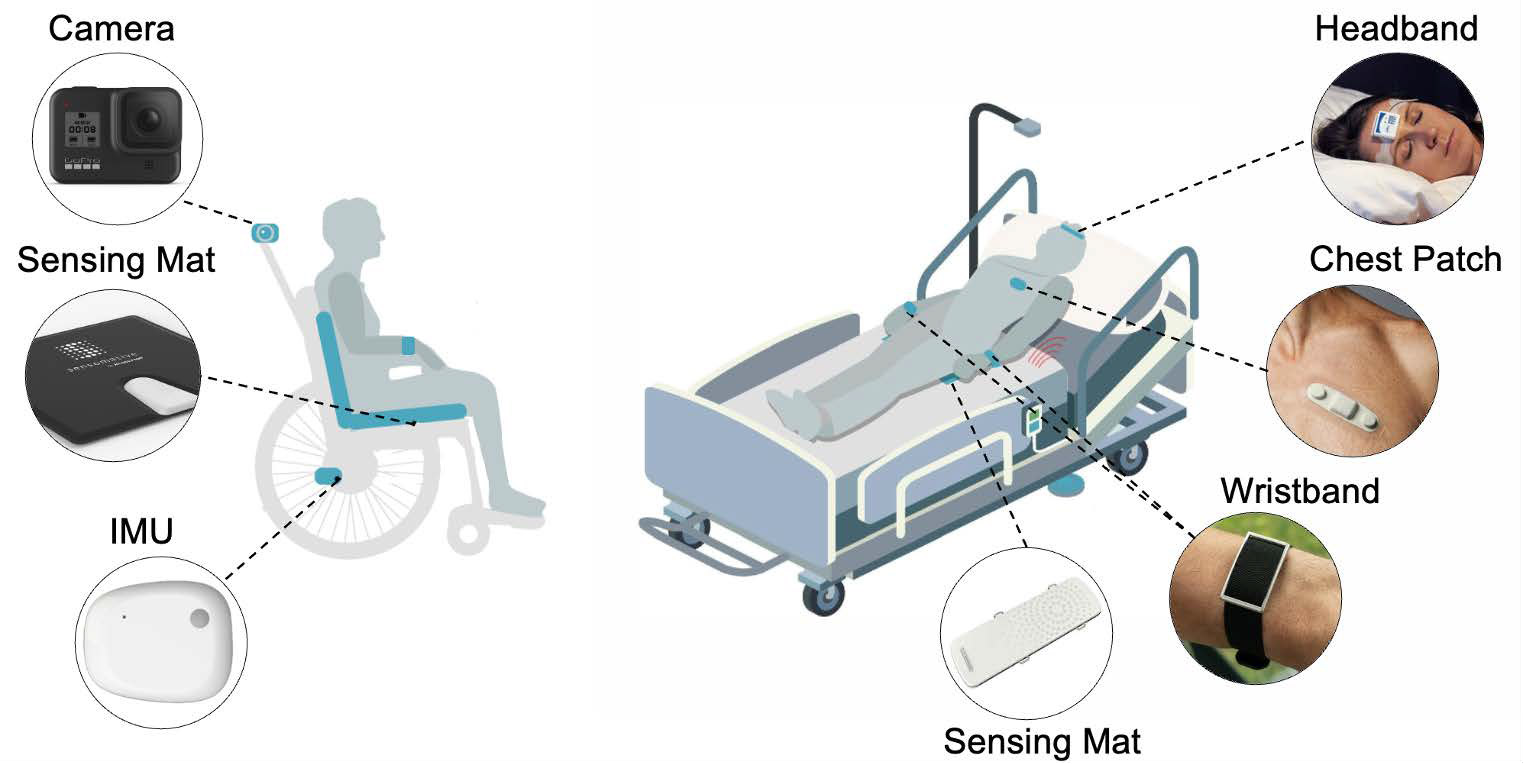Life Logging for Automatic Classification of Activities of Daily Living with Wearables and Nearables in the Elderly
Rehabilitation for chronic conditions is a long-term process that might span years in the life of individuals with spinal cord injury, stroke, Parkinson's disease, and dementia. These health conditions will keep expanding with the current aging population trends. Previous works aimed at predicting morbidities in chronic conditions from self-reported records. However, these approaches provide low-frequency information that fails to capture the physiological states.
Our work aims at long-term monitoring and prevention using wearable and nearable technologies to develop digital biomarkers of secondary health conditions such as pressure injuries and urinary tract infections.
We propose a setup of wearable and nearable technologies to continuously measure body movements, heart rate, and electrodermal activity thanks to embedded sensors like accelerometers, photoplethysmographs, and sweat sensors. In addition, we use ECG patches to measure cardiac functioning accurately. Our setup also includes nearable devices like pressure and IMU sensors integrated into the wheelchairs and piezoelectric sensors placed under the bed mattress to record sleep stages during the night.
Our protocol uses reference systems for a limited time, from video cameras to portable, clinically validated systems. We collect data from elderly living in nursing care facilities in cooperation with the National Center of Geriatrics and Gerontology (NCGG) in Nagoya, Japan. The protocol consists of the initial collection, for about 60 minutes of key ADLs, followed by a long-term recording for ten days per individual in their everyday living environments. During the first 60 minutes, one researcher uses a custom-made application to label the activities on a smartphone. The camera collects the video data for reference, and the entire system is synchronized at the beginning of the measurement for an efficient labeling method.
The labeled data will be used as a training dataset to build personalized models learning from individual samples. The proposed dataset was designed in line with the Japanese mapping for assessing ICF categories in individuals under institutional care, focusing on automating the identification of mobility and independence. This dataset will enable further development for digital health in the long-term prevention of elderly individuals by creating baselines and algorithms for activity recognition, sleep, and social engagement monitoring.
